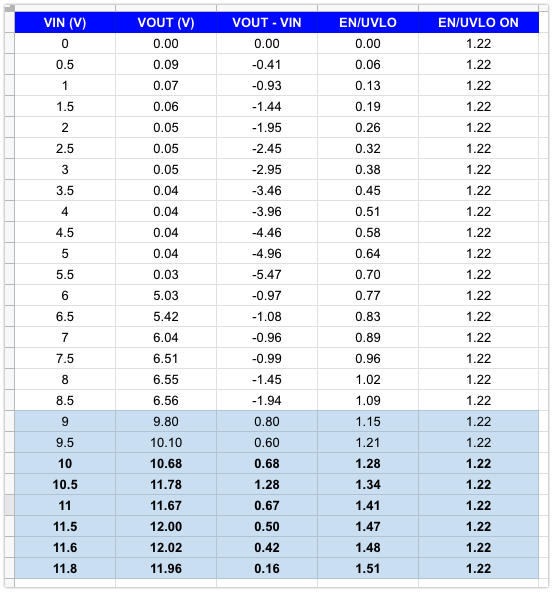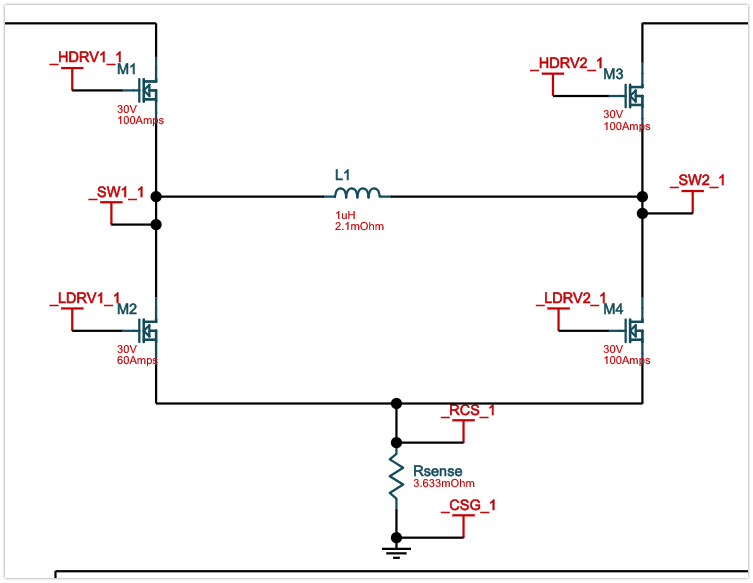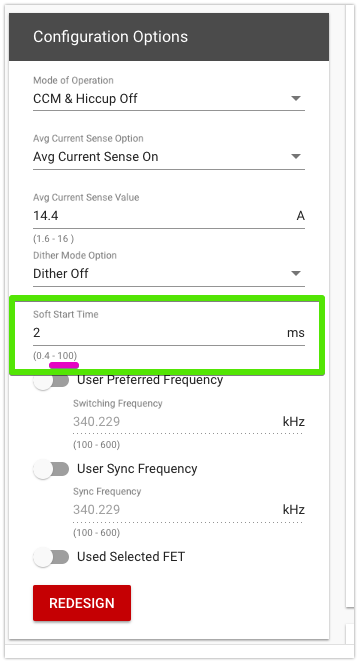Other Parts Discussed in Thread: CSD17577Q5A, CSD17573Q5B, CSD17303Q5
I am testing the circuit found here. I printed PCBs and hand-soldered the components; there may be some poor solder joints I need to re-visit, but I'm trying to figure out where to start.
Right now when I ramp the voltage up, the output voltage tracks as follows:
Questions:
- What would cause the output to sit around 0.5-1.0 V above VIN, rather than at 12.0 V as specced by the feedback resistors? Where can I probe to get to the root cause?
The circuit turns on earlier than expected (when UVLO is higher than 1.22); the specced resistors set it for ≈ 10 V. But I measured on the pin and at 9 V, EN/UVLO measured was > 1.22 V so this is working as expected. Maybe a component issue.





